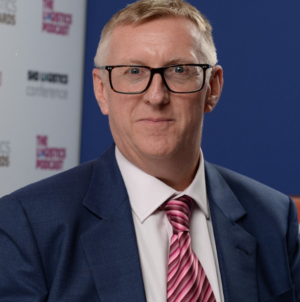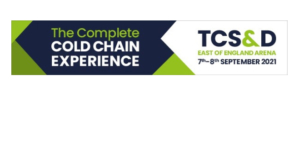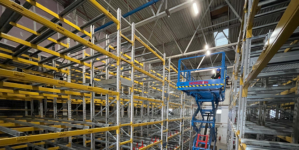-
Nutrivend selects Forterro’s Orderwise to support online expansion and streamline operations - April 11, 2025
-
ARROWXL LAUNCHES AMBITIOUS ZERO WASTE ROADMAP - April 8, 2025
-
THE BCMPA’S NEW CAMPAIGN DRIVES OUTSOURCING SUCCESS IN Q1 - April 7, 2025
-
BLACKOUT TECHNOLOGIES TARGETS TELEMATICS-INTEGRATED MOBILE DEVICE BLOCKING TO COMBAT SMARTPHONE DISTRACTION - April 1, 2025
-
Sparck Technologies awarded Royal designation - March 27, 2025
-
OpenADR Alliance announces first OpenADR 3.0 certified products with EVoke Systems, E.ON Energy and Universal Devices - March 25, 2025
-
Growing fulfilment and contract packer appoints new Managing Director - March 25, 2025
-
When is it time to invest in a WMS? Understanding the key trigger points - March 25, 2025
-
eCapital helps Vantage Recruitment on its journey to financial success - March 24, 2025
-
Hugo Beck Celebrates 70 Years of Packaging Innovation with Open House Events - March 20, 2025
LVMH, Guess Set New Targets for Supply Chain Sustainability.
by Genevieve Scarano, Sourcing Journal.
The call for sustainability remains persistent and apparel leaders, including LVMH and Guess, are answering it by setting new environmental targets.
From doubling internal carbon funds to assessing global water availability, here’s what the companies are doing to foster sustainability from sourcing to finished product.
LVMH strives to double its internal carbon funds
As the LVMH Group Environmental Department celebrates its 25th anniversary, LVMH has announced that it will continue to work on its “Life 2020” roadmap—a sustainability program that aims to boost the environmental performance of the LVMH Group and each of its business units.
“We aim to go even further in achieving the environmental excellence,” LVMH Group Environment Director Sylvie Bénard said. “For this reason, we plan to double our internal carbon funds as of next year and thus reduce even more rapidly our greenhouse gas emissions.”
In 2012, the LVMH Group established the LVMH Initiatives for the Environment (LIFE) program, to expand on the sustainable development strategy set by LVMH in 1992. On Tuesday, the LVMH Group introduced new objectives for 2020 that will foster the LIFE program over the next three years.
The “Life 2020” roadmap is based on four pillars that involve the Group’s activities and business sectors—products, supply chain, carbon dioxide and sites. For each pillar, the LVMH Group set concrete objectives that will accelerate the Group’s sustainability efforts and promote an eco-friendlier supply chain.
By 2020, the LVMH Group would like to achieve a 10 percent improvement in Environmental Performance Index (EPI) for all products. By making the product life cycle more sustainable, the company can reduce the environmental footprint of its product manufacturing process from sourcing materials to finished products.
For a greener supply chain, the LVMH Group strives to closely monitor the origins of raw materials used to create its products, while conserving natural resources in the sourcing process. The company is also working to apply the highest environmental standards across 70 percent of its procurement chains—including leather use. As part of this objective, the LVMH Group intends to have 70 percent of leather used sourced from Leather Working Group (LWG) certified tanneries.
While greenhouse gas emissions remain a pressing issue for the industry, the LVMH Group aims to cut carbon dioxide emissions by 25 percent by 2020. In 2002, the LVMH Group introduced carbon reporting at each of its sectors and furthered the fight against climate change, with the debut of an in-house Carbon Fund in 2015. Since last year, approximately $8 million has been invested in the LVMH internal carbon funds—and the company aims to boost its renewable energy use by 30 percent over the next three years.
The LVMH Group will also make its sites and stores more sustainable, with an improvement of at least 10 percent in environmental performance indicators. By reducing energy and water consumption, in addition to recycling waste and boosting energy efficiency by 15 percent, the LVMH Group can continue to foster a more sustainable future for the industry.
Guess raises the bar for apparel circularity and reduced water use
Known for its denim presence, Guess is ramping up its environmental standards—on Thursday, the retailer released its second sustainability report, which highlighted new objectives on reduced water use, apparel circularity and energy efficiency.
The goals comply with principles developed by the Global Reporting Initiative (GRI)—an organization that helps businesses assess their impact on climate change and human rights. As a member of GRI’s Standards Pioneers Program, Guess had its data externally validated, to further transparency and take the steps necessary to improve its supply chain.
“Through my experience leading this truly global company, I see one constant across borders: people, particularly the younger generation, are deeply concerned about the future of this planet,” Guess CEO Victor Herrero said. “At Guess, we understand that we must continue to grow and contribute to the global community with increasing care for people and the environment; we aim to embrace existing solutions as well as try new ones to address the social and environmental challenges of our time.”
Following the launch of its first sustainability report in 2015, Guess is expanding on its first formal sustainability strategy and by 2020, aims to make its global operations greener and encourage consumers to buy more eco-conscious garments.
This year, Guess mapped its denim production by water availability and assessed the sustainability of its denim products. To improve its denim production and products, the company is currently drafting a comprehensive water action management plan to address these impacts, which is set to debut in 2018.
Advancing a circular fashion system was another crucial step in report. Joining other leading fashion brands in repurposing garments, Guess will be incorporating a product take back program at the end of 2017, so employees, customers and the community can take part in a more circular economy and provide apparel with a second life.
Energy efficiency also remains crucial to the company’s sustainability goals. Since 2015, Guess has upgraded 286 stores in Canada and the U.S. with more efficient LED lighting. At its distribution centers, including Guess’s primary U.S. distribution hub in Kentucky, Guess installed new HVAC units and achieved 46 percent savings in natural gas consumption. What’s more, the company also recently pledged to the Science Based Target Initiative and aims to transition its current emission reduction goal over the next two years to reduce the impact of climate change.
































